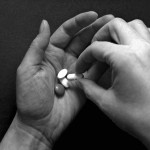
Successful management of depression still represents a major clinical challenge. In order to help doctors stay on top of the ever-increasing amount of data, the British Association for Psychopharmacology (BAP) regularly updates its evidence-based treatment guidelines. Recently, its update of the 2008 criteria was published (Cleare et al., 2015).
Due to the great amount of different patient/clinical situations, only key findings/recommendations for the treatment of depression will be presented in this blog.
Methods
Each subsection was updated by its respective authors in light of any randomised controlled trials or systematic reviews published since 2008.
Strength of evidence was rated from I (well-validated, high methodological quality) to IV (mostly expert opinion/clinical experience) that generally translated into different strengths of recommendation that ranged from A (category I-based) to D (category IV-based).
Acute treatment
Antidepressants
- Antidepressants are first-line treatment for moderate/severe depression in adults, and any depression severity that has persisted for at least 2 years (A)
- Antidepressants are not a first-line treatment for short-duration sub-threshold depression in adults (A) or major depression in children and adolescents (B), but should be considered in case of partial/no response to other treatments (A)
Psychological and behavioural treatments
- Mild to moderate depression: cognitive behavior therapy (CBT; A), behavioural activation (A) and interpersonal psychotherapy (A), with CBT being recommended as monotherapy if psychological therapy is indicated (B)
- Severe depression: psychological therapy should be considered as an add-on to pharmacotherapy (A), but not as sole treatment (B)
Physical therapy
- Only electroconvulsive therapy (ECT) is indicated as first-line treatment, but only in severe, urgent cases (C) and followed by pharmacotherapy maintenance (A)
- Light therapy is efficacious in the treatment of seasonal depression (B) and should not be combined with antidepressants (A)
Choice of antidepressant
- In case of more severely ill patients, clomipramine (B), venlafaxine (>150mg; B), escitaloporam (20mg;B), sertraline (B), amitriptyline (C) or mirtazapine (C) should be preferred
- Psychotic depression should be treated with an antidepressant and antipsychotic combined (A)
- In children and adolescents, only selective serotonin reuptake inhibitors (SSRIs) should be used (B)
- Patient preference (B) and expected side-effects profile (C) should influence drug choice as should psychiatric comorbidity with a preferential response to a particular class of drug (B), medical comorbidity that could affect tolerability (C) or concurrent medication (C)
Practical issue
- 2-4 weeks without improvement reduces the likelihood of response at a later point (A)
- Antidepressant response may take longer in older individuals (A)

Patient preference and the expected side-effects should influence drug choice.
Second-line treatment in case of inadequate response
- After 4 weeks of adequate treatment, if there is at least some improvement, maintain the same treatment for another 2-4 weeks (B), otherwise consider next-step treatment (B) or wait longer with patients who had previously failed treatment attempts (D)
- After 6-8 weeks, if there is at least moderate improvement, continue, otherwise consider next-step treatment (B), except in patients with previously failed treatment attempts (D)
Psychological options
- Add CBT to ongoing antidepressant treatment (A)
Pharmacotherapy options
- Limited evidence for a dose increase (C)
- Switching antidepressants (A), especially venlafaxine after more than one SSRI failure (B)
- Augmentation/combination treatment (A), especially quetiapine or aripiprazole (A) or lithium (A) as first-line agents
Physical treatment
- ECT should be consider in case of refractory depression (C)
Relapse prevention
- Medication should be continued after remission for a certain duration which depends on the relapse risk (A), with low-risk patients continuing at least 6-9 months (A) and higher-risk patients continuing for a minimum of 2 years
- Older people may benefit particularly from continued treatment (A)
- Lithium should be considered as second-line for relapse-prevention in patients at high risk of relapse (B) or suicide, but not as monotherapy for relapse prevention (B)
- CBT should be considered for relapse prevention in high-risk patients or in those with residual depression (A), in case of acute response to CBT, continuation medication is not generally recommended (A), except if remission is unstable or partial (B)
- After acute response to ECT, continuation medication should be added (A) or ECT should be repeated in case of frequent relapses or no response to medication (C)

Following remission, medication should be continued for 6-9 months for low-risk patients and at least 2 years for higher-risk patients.
Treatment of relapse
- Re-established drug treatment regimen if stopped (B), provide support and monitoring without changing the drug dosage if an adequate dose is prescribed (B)
- Consider increasing the dosage, in line with recommendations stated above (B)
Stopping treatment
- A minimum of 4 weeks taper is recommend after long-term treatment (D), or even months in case of planned withdrawal after long-term prophylaxis (D)
- In case of discontinuation, provide explanation and reassurance (C) and in case of more severe reactions re-start antidepressant and taper more slowly (C)
Special considerations
- Age-related factors as well as medical comorbidities should be considered when prescribing antidepressants
Limitations
- One of the main limitations of these guidelines is that they were based on patients enrolled in clinical trials, and therefore may not be fully applicable to patients seen in routine care.
- Generally, it is difficult to compare studies using different outcomes and methodologies, as is the case for all systematic reviews/meta-analyses.
- And clearly, the recommendations provided here are recommendations; the final decision should always be based on the values and preferences of the service user and the clinical experience of the treating physician.
Conclusions
The updated BAP guidance provides clinicians with state-of-the-art knowledge about evidence-based treatment for people with depression. As such, they offer relatively straightforward clinical guidelines for the treatment of a complex illness that all clinicians should at least be aware of.

This updated guidance provides new information about prescribing in elderly and adolescent populations.
Links
Primary paper
Cleare A, Pariante CM, Young AH, Anderson IM, Christmas D, Cowen PJ, …Uher, R. (2015) Evidence-based guidelines for treating depressive disorders with antidepressants: A revision of the 2008 British Association for Psychopharmacology guidelines. Journal of Psychopharmacology, 29(5), 459–525. http://doi.org/10.1177/0269881115581093
Other references
Shepherd A. (2015) Antidepressant withdrawal syndromes: time to grasp the nettle? The Mental Elf, 23 Mar 2015


Antidepressants for depression: new BAP guidance http://t.co/BzScDO8fni #MentalHealth http://t.co/vAHXDXHnq8
Antidepressants for depression: new BAP guidance https://t.co/z1tiau542i via @sharethis
A handy summary of the new guidance for the use of antidepressants – http://t.co/u9VALY95T9
Antidepressants for depression: new BAP guidance https://t.co/iDvkeujJ8a via @sharethis
Antidepressants for depression: new BAP guidance http://t.co/5Pn32yqfn4 via @theoldreader
New guidance on #antidepressants for #depression from @BAPsych http://t.co/oqS3oUIg7J
@Mental_Elf Good compact summary of our paper – Antidepressants for depression: new BAP guidance https://t.co/NOQlkOFFxf via @sharethis
Don’t miss: Antidepressants for depression: new BAP guidance http://t.co/oqS3oUIg7J #EBP
@Mental_Elf and for those with a fear of taking ……….
Antidepressants for depression: new BAP guidance – http://t.co/D0nJEoUc6P
Antidepressants for depression: new BAP guidance http://t.co/tLZfVQwUi2 via @Mental_Elf
Antidepressants for depression: new @BAPsych guidance http://t.co/zqYfWEdJXV via @Mental_Elf via @HelgeAuto
Antidepressants for depression: new BAP guidance https://t.co/d1rS3sUdGr
New guideline on using #antidepressants in #depression from @BAPsych http://t.co/hpr1mFkAqe Review by @Mental_Elf http://t.co/0y2jW7izlw
Antidepressants for depression: new BAP guidance https://t.co/O9f5SRlBgT via @sharethis